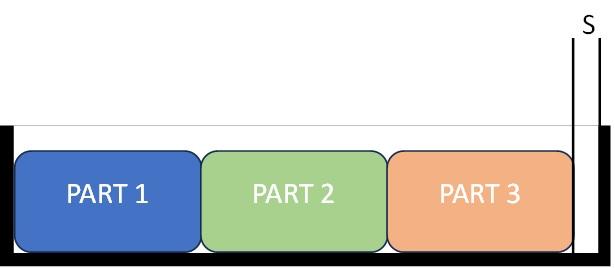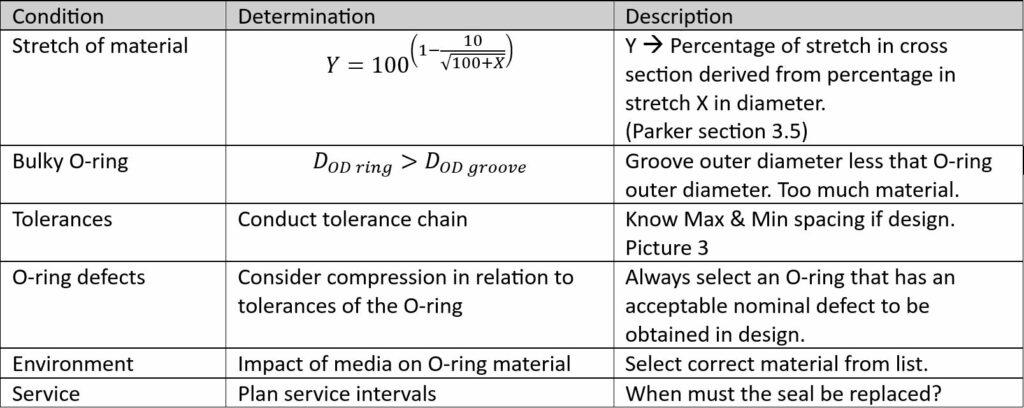Designing an O-ring seal may seem simple, and in many instances, it is.
However, obtaining insight into the system’s pressure curve often necessitates conducting tests. Each system exhibits unique pressure curves based on factors such as pumps, pistons, valves, and system inertia.
The real pressure profile of the system may feature high-pressure spikes during startup, operation, and shutdown that require careful examination. Particularly, the startup and shutdown phases are frequently overlooked during the design process. These stages are equally critical to the seal’s functionality and, therefore, should be included in the requirement specifications.
Understanding the application
If your objective is to design a robust seal, it is crucial to have a clear understanding of the type of seal required. Begin by detailing the obvious aspects of the seal’s requirements, typically centered around the operational stage. Afterward, address the startup and shutdown phases. Finally, provide a description of the service stage.
Creating a visual morphological diagram of the seal can be a valuable tool for identifying critical design criteria. Ensure that this diagram includes all stages and remember to create a breakdown list for each stage.

Designing the seal
When designing a seal, the available space, denoted as “S” serves as a limiting factor. The material of the O-ring determines the size of the acceptable “gab”. This applies to all seals except for Face or Flat seals, which employ a deformable approach to achieve a perfect seal. This article focuses on radial seals.
It’s important to note that the thinner the O-ring, the tighter the tolerance required for “S.” To maximize the tolerance range, use the largest O-ring possible.

The various stages within the system have different effects on the design and, consequently, on the seal. It’s essential to conduct a structural analysis of all stages before selecting a solution.
Keep in mind that one seal cannot be optimal for all stages, so a compromise is necessary. Ensure that the most critical seal becomes the primary selection.
The space “S” is influenced by the following factors:
- Temperature
- Pressure
- Manufacturing capabilities, including tolerances
- Wear
- Design
Temperature
Conduct a temperature expansion analysis to ascertain the adequacy of the spacing “S.” Issues may arise when there is a significant variation in the material’s expansion ratio or when there is a substantial temperature difference.

Pressure
When designing the seal, the pressure profile is of paramount importance, and it may not be known during the development phase. Therefore, it’s crucial to verify the pressure profile through testing. Establishing the pressure profile is an iterative process and cannot be predetermined before development. However, in most cases, designing the seal based on the application analysis is sufficient.
Begin by determining the type of pressure profile required, whether it’s internal pressure or external pressure. Once this is established, continue with the design process.

Next, let’s describe the stages the seal goes through during operation. This is essential because it’s where we determine the most important requirements.

Manufacturing
Gaining insight into manufacturing capabilities is highly advantageous during the design process. Tolerances differ depending on the manufacturing technology employed, as depicted in Picture 1.

In this context, ISO 2768-1 can assist in establishing the IT grades for the chosen manufacturing process. It’s crucial to be specific about the intended manufacturing process. If any changes are made, it’s essential to verify that they remain compatible with the design’s original intent.
The initial design should consider worst case scenario conditions and always follow the groove detail requirement specified in the O-ring manufacture guidelines. Remember to get this detail documented from the manufacture and acquire a measurement report for documentation.
Wear
Always perform a tolerance analysis on the spacing to determine the maximum and minimum space “S.” It should fall within the seal’s maximum allowed space. The minimum space should also account for expansions during system operation.
In this context, the environmental medium’s impact on the O-ring material is crucial. The medium may cause the O-ring to swell, potentially leading to seal failure.
When considering wear for seals with moving parts or in different pressure directions, glide rings are a recommended choice for most linear motion applications and should be part of the design consideration. It’s equally important to factor in heat when dealing with fast-moving rotation, necessitating the use of special seals.
Design
Why is design emphasized in this context?
It’s because the decisions and considerations made during the seal and application design phase can significantly limit opportunities for design improvements as the development progresses. For development purposes, it’s essential to allow room for potential enhancements, especially when creating a new system from scratch. This may not be as critical when working with established processes and well-described systems.
The specific space required for these improvements can vary from one application to another and may involve the inclusion of a guide ring, backup ring, or a double seal.
A common issue in seal design is overlooking the details of the groove where the seal is placed. Many applications fail to meet the groove details recommended by the manufacturer. This issue can arise during manufacturing due to imperfections such as offset, flash, weld lines, and burn marks, all of which are critical surface flaws.

When using a plastic mold, it’s important to pay close attention to the mold details, especially concerning the seal surfaces. While it is possible to design a mold that doesn’t necessitate additional machining, it demands a deep understanding of material properties, mold design, and material flow within the mold. Nonetheless, it’s generally advisable to opt for the simpler solution across all applications.
Always select material according to the application media
The type of media to which the seal is exposed holds significant importance. It’s crucial to thoroughly assess the media in which the seal operates at all stages. Unfortunately, service considerations are often neglected. For instance, if a component of the application involves an acidic or basic material compound, it’s imperative that the seal material is resistant to such substances. Different seal materials react differently to the media they come into contact with, making it vital to choose the correct material. Failure to do so can lead to seal failure.
Reference link to material guide:
M-Seals: https://www.m-seals.com/dk/da/download-center/kemiguide/
Parker: https://www.parker.com/content/dam/Parker-com/Literature/O-Ring-Division-Literature/ORD-5700.pdf
Start Backwards
When designing an application that necessitates a seal, it’s a wise practice to adopt an “inside-out” approach. Frequently, the seal ends up as a byproduct of the application, potentially leading to a costly custom-sized seal. In cases where the design mandates a seal, consider employing the inside-out approach by designing it using standard components. This approach enhances availability and reduces costs.

Strive to set your requirements as the minimum standard and design the application using standard components but with a larger safety margin. If this isn’t feasible, a custom solution remains an available option.
RUN - Failure mode prevention analysis
A common practice to finalize the design is to perform a failure mode analysis. This entails consolidating all the conditions mentioned above into a single list and examining how they may interact with one another. Utilizing the morphological approach can be a practical method for creating this comprehensive overview.
- Stretch of material
- Bulky O-ring
- Tolerances
- O-ring defects – Sensitivity analysis
- Environment
- Service

Listing these conditions together often brings out overlapping issues, making it possible to identify potential failure points before proceeding with the implementation.
Verify conditions before implementation.
All seals and design decisions should be validated through testing. It’s, therefore, a prudent practice to incorporate an iterative development process to confirm design decisions and uncover potential design weaknesses.
Choose a development process that suits your project’s needs and put it into action.
Best of luck with your project!




